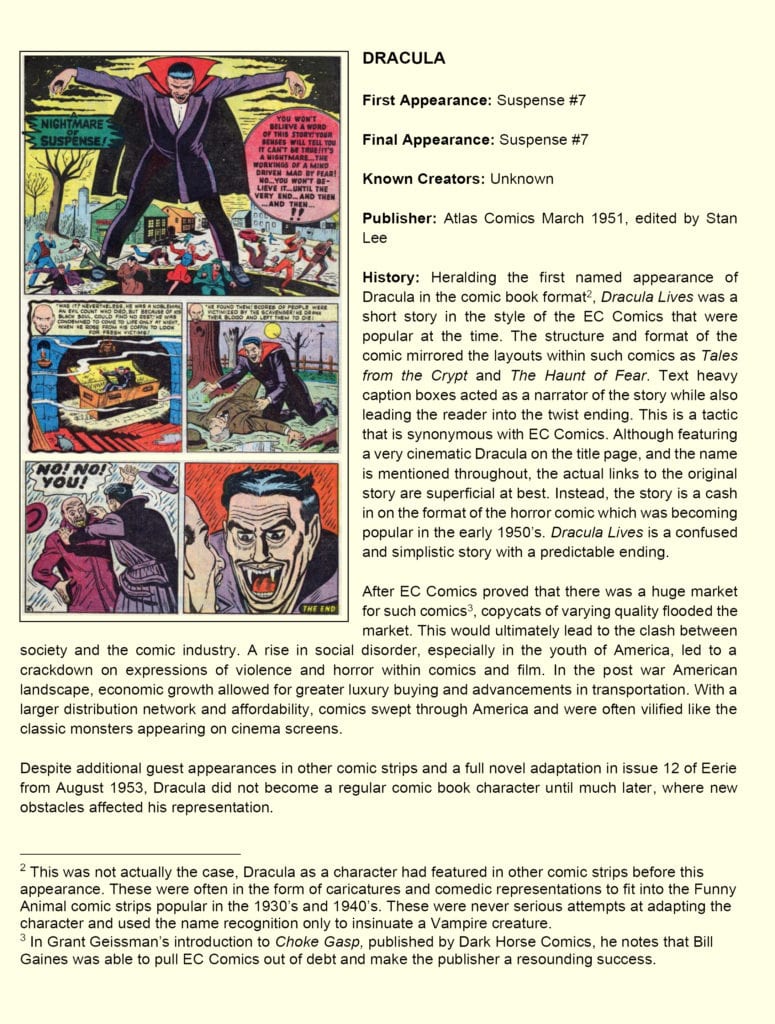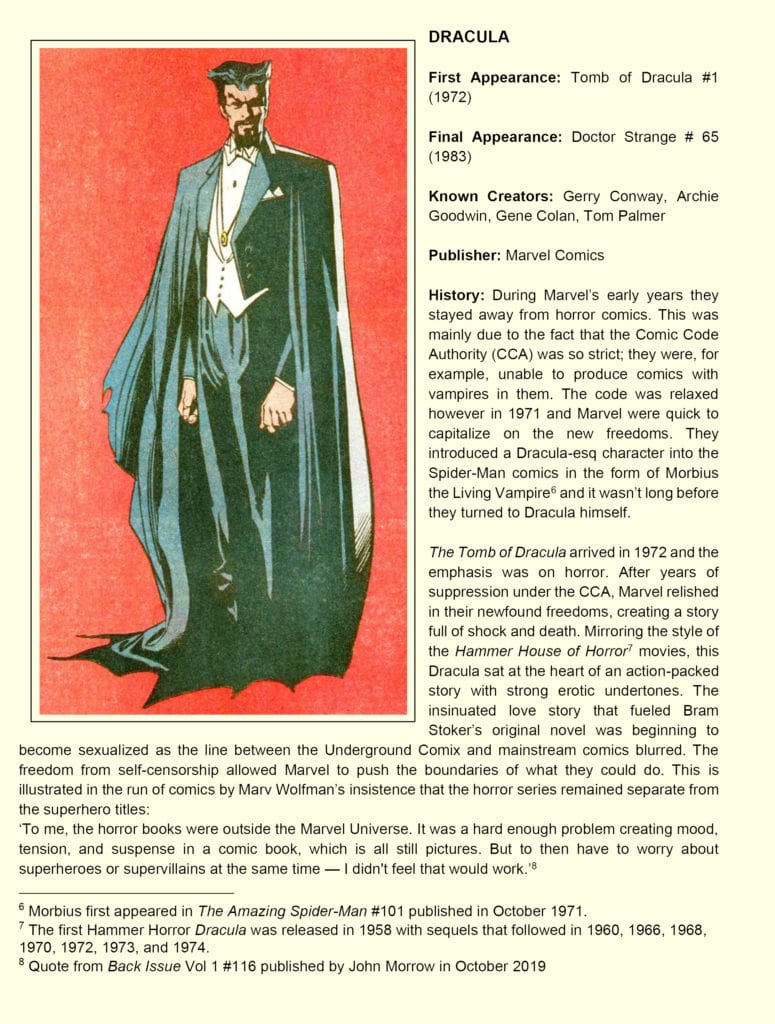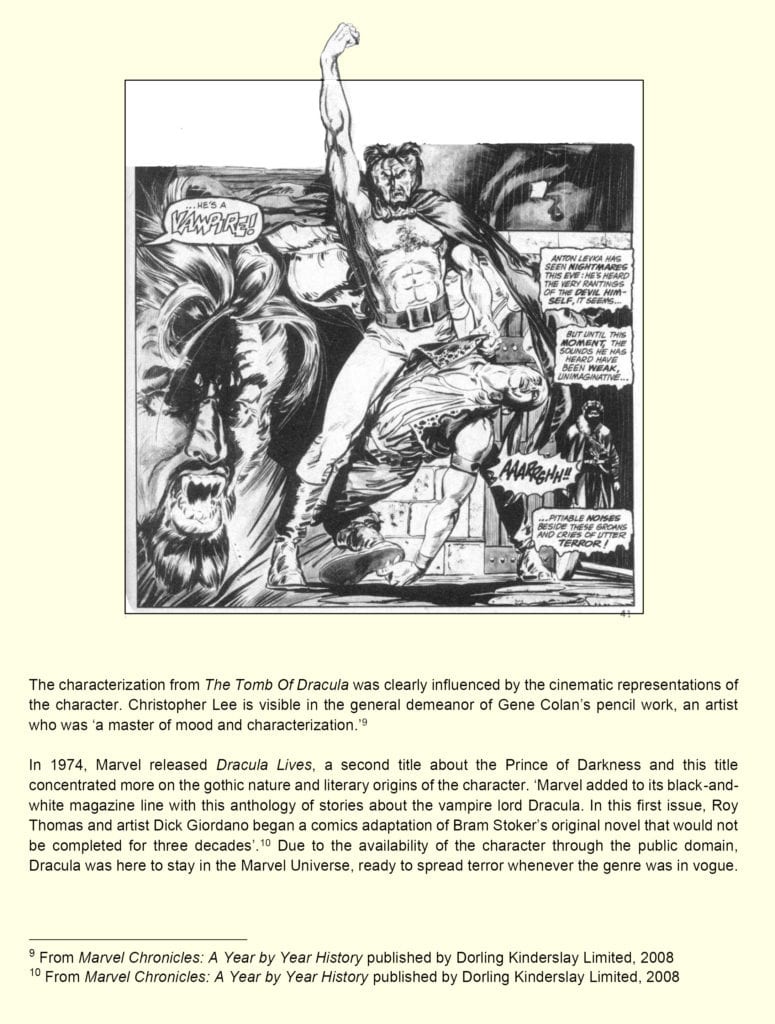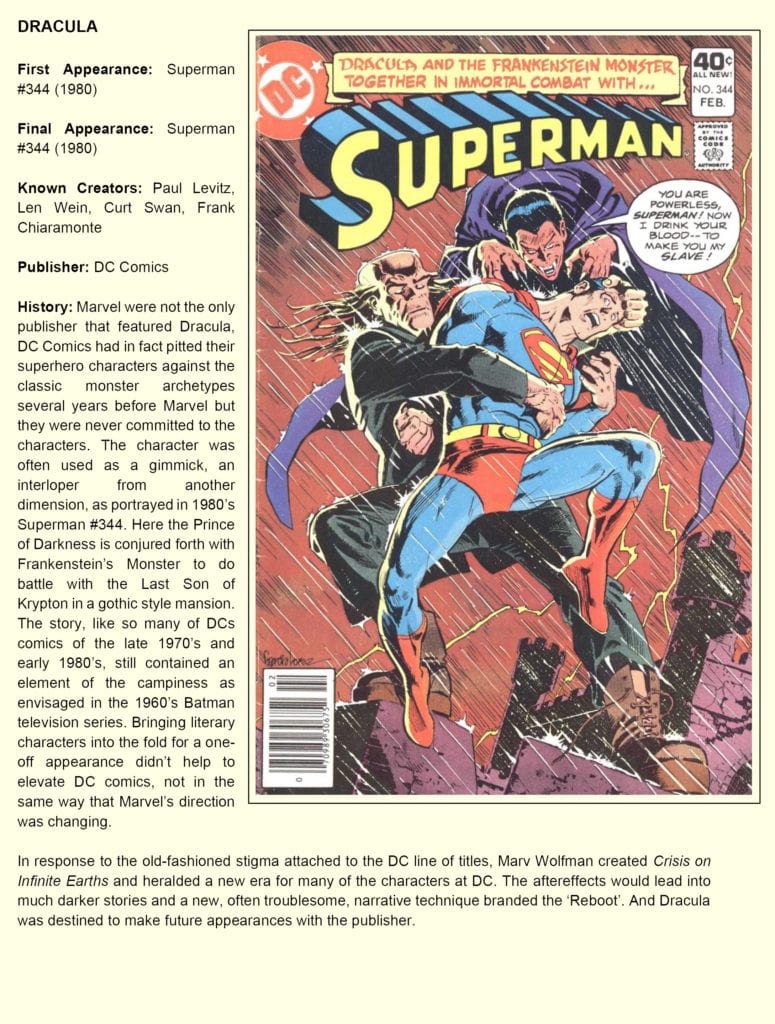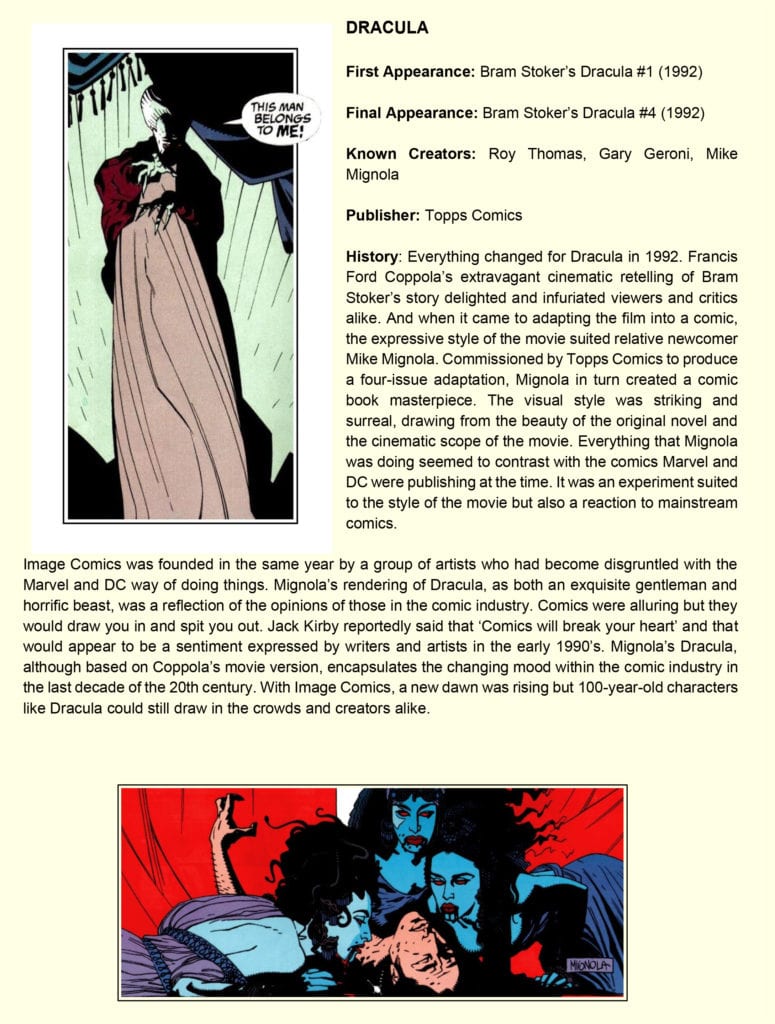“His face was a strong – a very strong – aquiline, with high bridge of the thin nose and peculiarly arched nostrils; with lofty domed forehead, and hair growing scantily round the temples, but profusely elsewhere. His eyebrows were very massive, almost meeting over the nose, and with bushy hair that seemed to curl in its own profusion. The mouth, so far as I could see it under the heavy moustache, was fixed and rather cruel-looking, with peculiarly sharp white teeth; these protruded over the lips, whose remarkable ruddiness showed astonishing vitality in a man of his years. For the rest, his ears were pale, and at the tops extremely pointed. The chin was broad and strong, and the cheeks firm though thin. The general effect was one of extraordinary pallor.”
(Bram, Stoker. Dracula Oxford : Oxford University Press, 2011)
The range of representations of Dracula: Prince of Darkness throughout comic book history is not just at the mercy of the creators’ whim but, in essence, reflects the trends of the larger industry. As the moods of the readers changed, swayed from one genre to another, the adaptation of a classic like Dracula moved with the audience. This is a phenomenon that can be seen in cinema as well as on the pages of comic books. From metaphor to monster and back again, Dracula embraces his historic legends and modern sensibilities in equal measure.
The following is an extract from The (Un)Official Handbook of the Universal Monster* that tracks the Prince of Darkness’ comic book legacy:
Conclusion
In the last 30 years, comics have featured a string of vampires. Whether in the mainstream or in self published work, the Vampire is still an allure for creators who want to use violence and bloodlust as a metaphor for elements of modern life. And Dracula often features as a character within these stories as the epitome of evil, love, or other emotional allegory. Whether this is in Buffy the Vampire Slayer, Marvel’s superhero comics, or one-shots like Dracula Motherf**cker, Alex De Campi’s psychedelic retelling published by Image Comics, the character still has the ability to be adapted to fit the need of the story.
With each new adaptation the character is changed with different aspects seeping into the audience’s subconscious, growing the legend. It is ironic that elements of Francis Ford Coppola’s movie that were ridiculed, such as Dracula walking during daylight, were taken directly from the original novel, however the strength of the movie and comic adaptations over the years have altered the audience’s perception of what the character is and can do. Vampires are instantly killed by sunlight. This has become the accepted truth.
Living in the shadows and on the fringes of popular culture, Dracula, as a character in comics, has never reached the literary heights of Stoker’s original striking figure. Used as a foil for modern superheroes to emphasize their modernity, or as a way to interject an inflated sense of importance into a horror comic, the Prince of Darkness is a fan favourite colloquialism for the horror genre. His appearances over the years have ranged from a hunched, goblin-esq creature to a sophisticated gentleman, but none of his visual representations have lifted him from the gutter. And maybe this is why Dracula will always have a home in comics, because Comics (with a capital C) is also struggling with this breakthrough from the gutter into the light; from mere entertainment into high art.
*A totally fictitious guide


